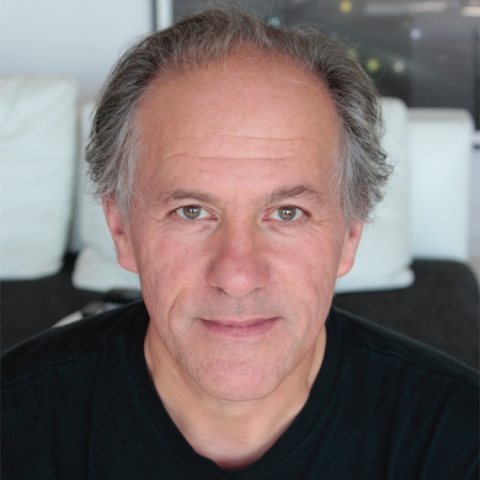
Exploring the aesthetics of AI
When George Legrady began experimenting with computers in the 1980s, he opened up new possibilities for artistic creation. Now, the UC Santa Barbara professor will feature his work in the Getty’s fall 2024 PST Art + Science Collide initiative, which brings together art and science across Southern California.
Legrady, a professor in the university’s Media Arts & Technology (MAT) program, is participating in four exhibitions that explore the intersections of artificial intelligence, data and art, continuing his long-standing focus on how technology redefines visual media. During the fall quarter at UCSB, Legrady will teach “Art & Technology,” which examines the degrees to which the Getty exhibitions engage with both art and science.
“I am also interested in how context and narrative redefine how we understand things,” said Legrady, who received a Guggenheim award in 2016. “The $20 million funded, expansive 70+museum exhibitions that are part of the Getty PST Art + Science initiative will re-imagine how we understand the relationship between art and science, hopefully providing insights.” On view at the Nan Rae Gallery, Woodbury University in Burbank, Legrady’s solo exhibition “AI & Fiber Synthesis” (Sept. 13-Nov. 9) features eight large-scale tapestries created using MidJourney, an AI image-making software. Pushing beyond conventional aesthetics of AI, Legrady fabricates the tapestries in Flanders, Belgium, blending traditional weaving techniques with modern digital technologies.
At the Los Angeles County Museum of Art (LACMA), Legrady’s work will be featured in “Digital Witness: Revolutions in Design, Photography, and Film” (Nov. 24-Jul 13, 2025). The exhibition, curated by Britt Salvesen and Staci Steinberger, highlights significant moments in digital photography and design, including one of Legrady’s early “born-digital” works from the 1980s.
Legrady will also participate in “Seeing the Unseeable: Data, Design, Art,” curated by Julie Joyce and Stephen Nowlin at the Art Center College of Design in Pasadena. This exhibition delves into how data and algorithms influence artistic creation. Legrady’s contribution consists of images from his “Phantom Waves” series.
On Nov. 8 and 9, Legrady’s interactive installation “Dynamic Confluence” will be presented at the Culver Center for the Arts, UCR Arts in Riverside. Created during the COVID-19 pandemic with student collaboration, the work responds to viewer interaction, allowing movements to control the visuals and sound and evolved out of research funded by a National Science Foundation grant.
Legrady’s focus on how using technology to push the boundaries of visual media has led him to become a key figure in digital art. His career has evolved from traditional photography to computational processes, exploring how machines and algorithms shape the meaning of images.




